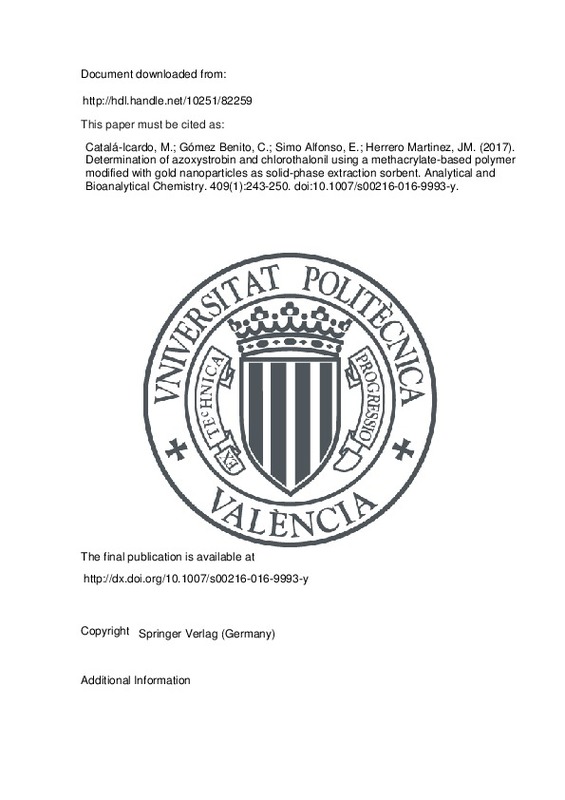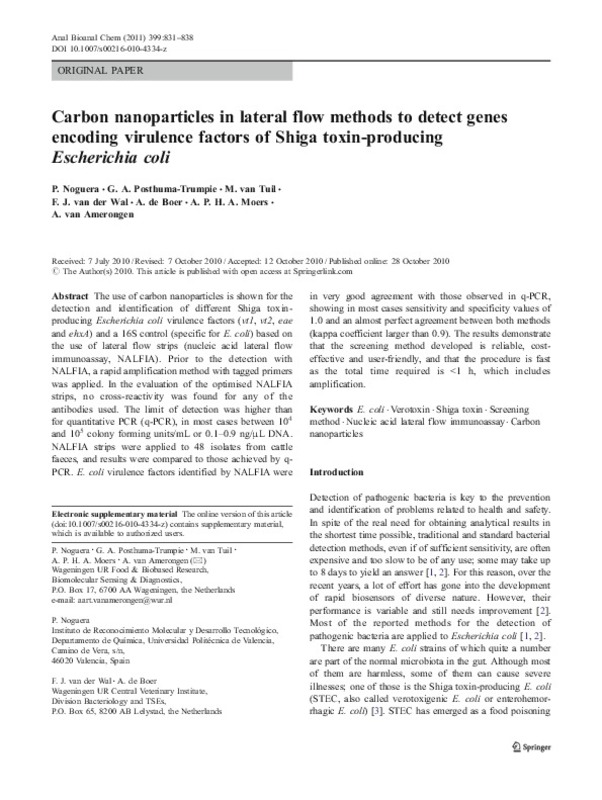|
Resumen:
|
[EN] In recent years, research has focused on the development of different types of inorganic nanoparticles (NPs) to be used as labels in immunoassays instead of fluorophores or organic particles. Basically, inorganic NPs ...[+]
[EN] In recent years, research has focused on the development of different types of inorganic nanoparticles (NPs) to be used as labels in immunoassays instead of fluorophores or organic particles. Basically, inorganic NPs are characterized by their optimal optical properties (e.g., high photostability and high quantum yield). The inorganic NPs studied most have been silica NPs, quantum dots (QDs), noble metals, metal nanoshells and lanthanide oxides.
This review presents a general overview on the progress of NP-preparation methods and NP-surface-functionalization procedures, in order to improve the sensitivity of the immunoassays involved. Other factors that must be taken into account are the type of solid-phase substrate (e.g., NP, microtiter plate, membrane and cover glass), format (i.e. direct or indirect) and the detection mode employed in the assay. Fluorescence has been used most as the detection mode. Also widely used has been time-resolved fluorescence with lanthanide ions as probes.
Finally, our review of recent literature showed that most published immunoassays using inorganic NPs were applied to biological samples. (C) 2011 Elsevier Ltd. All rights reserved.
[-]
|






![[Cerrado]](/themes/UPV/images/candado.png)




